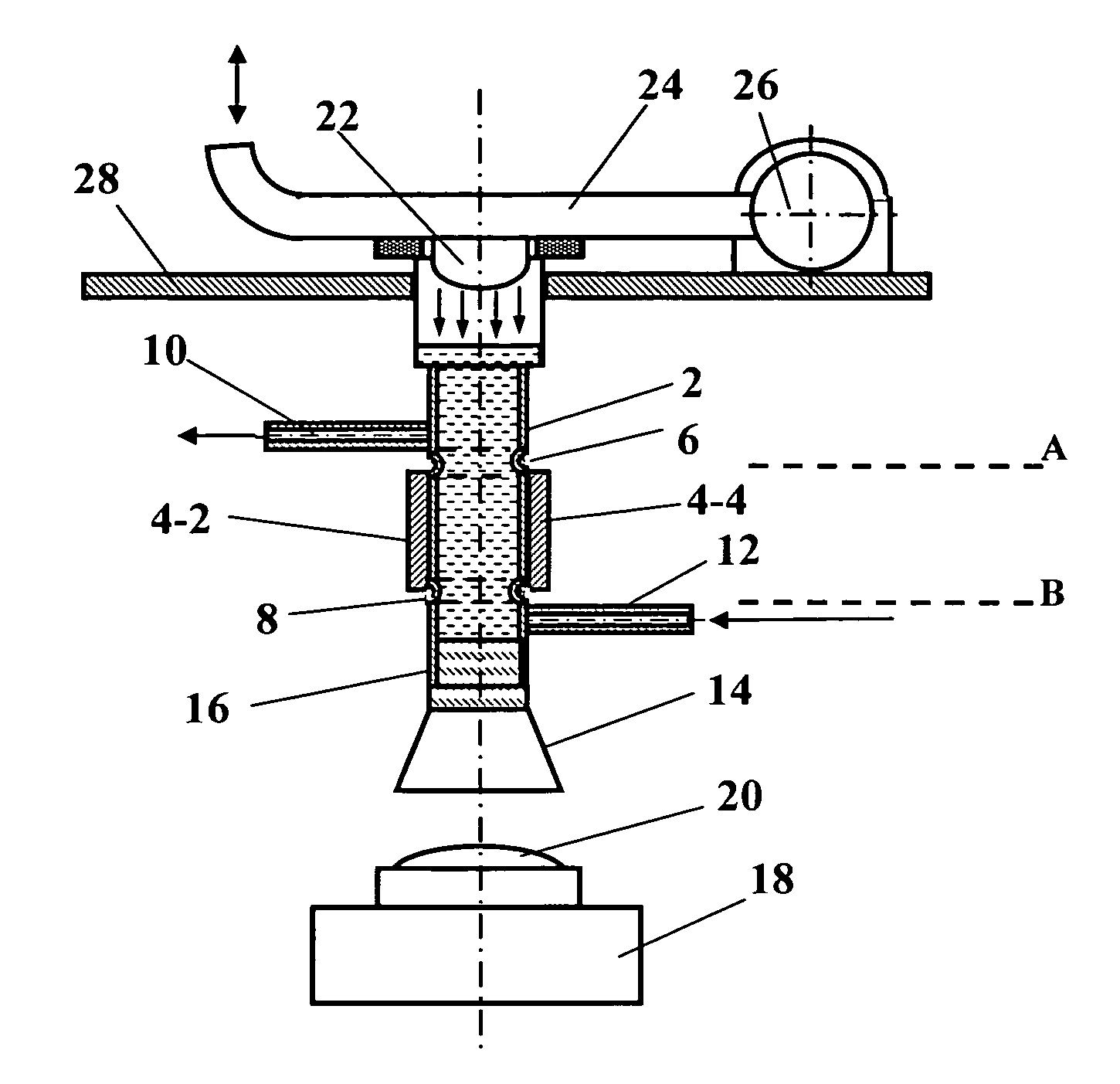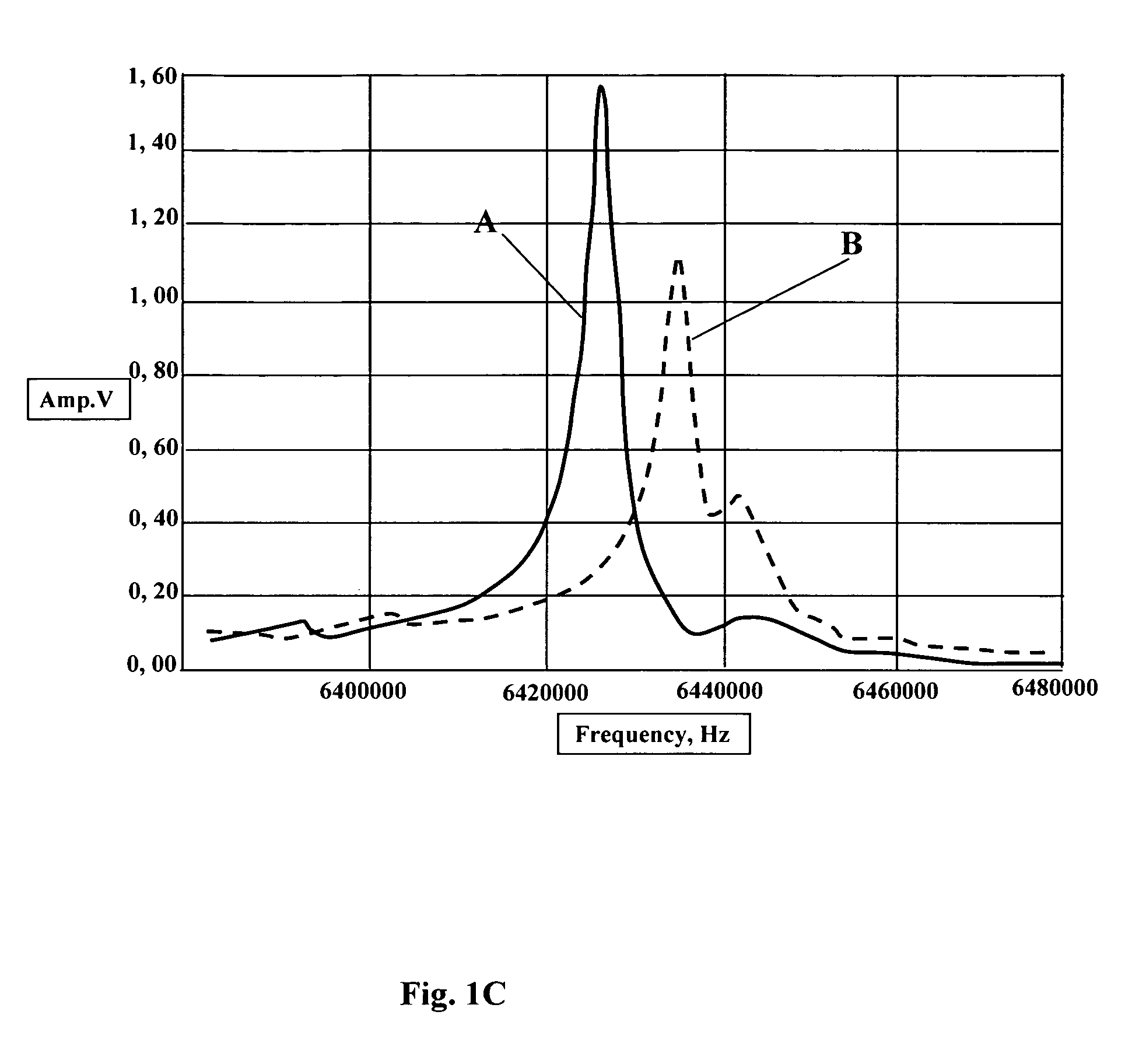Method and apparatus for determination of the concentration of particles in multi-component fluid systems
a multi-component fluid system and particle technology, applied in the direction of structural/machine measurement, analysis of fluids using sonic/ultrasonic/infrasonic waves, ultrasonic/sonic/infrasonic waves, etc., can solve the problem that prior art systems can determine only a limited number of components and the number of components is limited, and achieves low temperature control. the effect of precision
- Summary
- Abstract
- Description
- Claims
- Application Information
AI Technical Summary
Benefits of technology
Problems solved by technology
Method used
Image
Examples
example
[0144] The following is an example of the separation of somatic cells and fat particles in milk using the apparatus and method of the present invention. Monitoring of the somatic cells and fat particles was made by measuring optical density and determining ultrasonic velocity.
[0145] The somatic cell count (SCC) and fat particle concentration of the milk sample was determined during milking using the following procedure. A milk sample was transmitted to the acoustic standing wave manipulating device and to the measuring chamber, i.e. the cavity of its cylindrical acoustic resonator.
[0146]FIG. 8 shows the separation of the fat and somatic cell portions using the apparatus of the present invention. The distribution is similar to that shown in and discussed above with FIG. 3.
[0147] The apparatus of the present invention was connected directly to the milking system. The milk sample was brought to 20° C. and its somatic cell and fat fractions were separated using a flow-through apparat...
PUM
| Property | Measurement | Unit |
|---|---|---|
| particle size | aaaaa | aaaaa |
| size | aaaaa | aaaaa |
| size | aaaaa | aaaaa |
Abstract
Description
Claims
Application Information
 Login to View More
Login to View More - R&D
- Intellectual Property
- Life Sciences
- Materials
- Tech Scout
- Unparalleled Data Quality
- Higher Quality Content
- 60% Fewer Hallucinations
Browse by: Latest US Patents, China's latest patents, Technical Efficacy Thesaurus, Application Domain, Technology Topic, Popular Technical Reports.
© 2025 PatSnap. All rights reserved.Legal|Privacy policy|Modern Slavery Act Transparency Statement|Sitemap|About US| Contact US: help@patsnap.com



